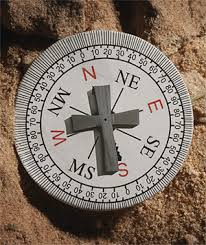Every journey, no matter what level of success or amount of challenges, must come to an end. I am pretty predictable at the end of a pilgrimage: clean (myself, my clothes and my supplies), organize the supplies for the next trip, get some rest, and ever so slowly begin to review the pictures and the journal entries remembering the stories of the adventure that just occurred. Just as I have a story that needs to be shared, so do you. What is your story of faith and how often do you share it with others?
Joe Paprocki and Julianne Stanz, authors of the book The Catechist’s Backpack, wrap up their lessons to us by reminding us of the importance of sharing our story with others. They share the wisdom found in the document Go and Make Disciples about the power of telling others our story, “Whether you were baptized as a child or joined the Church as an adult, you have a story of faith. Whether you sincerely live your faith in quiet or have a great public ministry, you have a story of faith. Whether you have a grade-school knowledge of the catechism or have a theological degree, you have a story of faith” (No. 6). Isn’t the same true when returning from a backpacking adventure? Whether you are a seasoned professional, a weekend warrior or a first-timer, you have a story to share.
Recently a very good friend, Dr. Mike Carotta, shared a story of faith about a lady he happened to cross paths with at the gym very early one morning. As he was on the treadmill recovering from ankle surgery, he noticed this woman walking at a brisk pace with a set of Rosary beads. The next time she passed by he checked it out again and sure enough, she was praying the Rosary while exercising. After he completed his time on the treadmill and she was done with her brisk walk, he introduced himself and asked her to share the story of why she prays the Rosary. After a few moments of wondering about this guy asking her a question she answers, “I’m praying this for my 7 year old nephew…he’s stubborn.” Mike is a bit taken back because he wanted to know about the Rosary itself, not the subject she was praying for through the prayer. Once she really understands she says, “We make 5,000 of these a year and father heads to Africa and gives them away. They love it and I love the Rosary.” She tells him a story of how her niece asked her to teach her the specifics of the Rosary and she had to put her off so she could research it online first. But she told Mike that she believes in Mary’s intercession to her Son for us. My friend was struck by witnessing how a person is intimately involved in prayer and lives it during the dark mornings before dawn around a gym track. She may not know the mechanics but she KNOWS this prayer by and through her heart. Mike finishes this story by saying, “I’m happy that I am courageous enough to knock on the story door, grateful for the conversation that came forth, but I notice that there is a bounce to my step; and it’s light!
It is through stories “that communal bonds are strengthened, relationships are deepened, our faith is nourished and God’s movement in our lives is revealed” (The Catechist’s Backpack, p. 94). Today we have so many more solid and outstanding resources and methods to learn our faith than ever before in human history. Yet, it also seems that the art of telling our love story with God is diminishing. As someone who has been a catechist and youth minister for many years, when I encounter those who were teens in my parish programs, they never seem to remember my lessons but they do remember some of the stories.
So as this backpacking journey comes to an end and you begin to reflect on the stories, remember this quote by Native-American poet Oren Lyons, “Life will go on as long as there is someone to sing, to dance, to tell stories and listen.”
Reflection written by John Gaffney, Diocesan Director for Evangelization & Catechesis.
Julianne Stanz will present a workshop for catechetical leaders in the Diocese of Des Moines on March 3, 2016.




